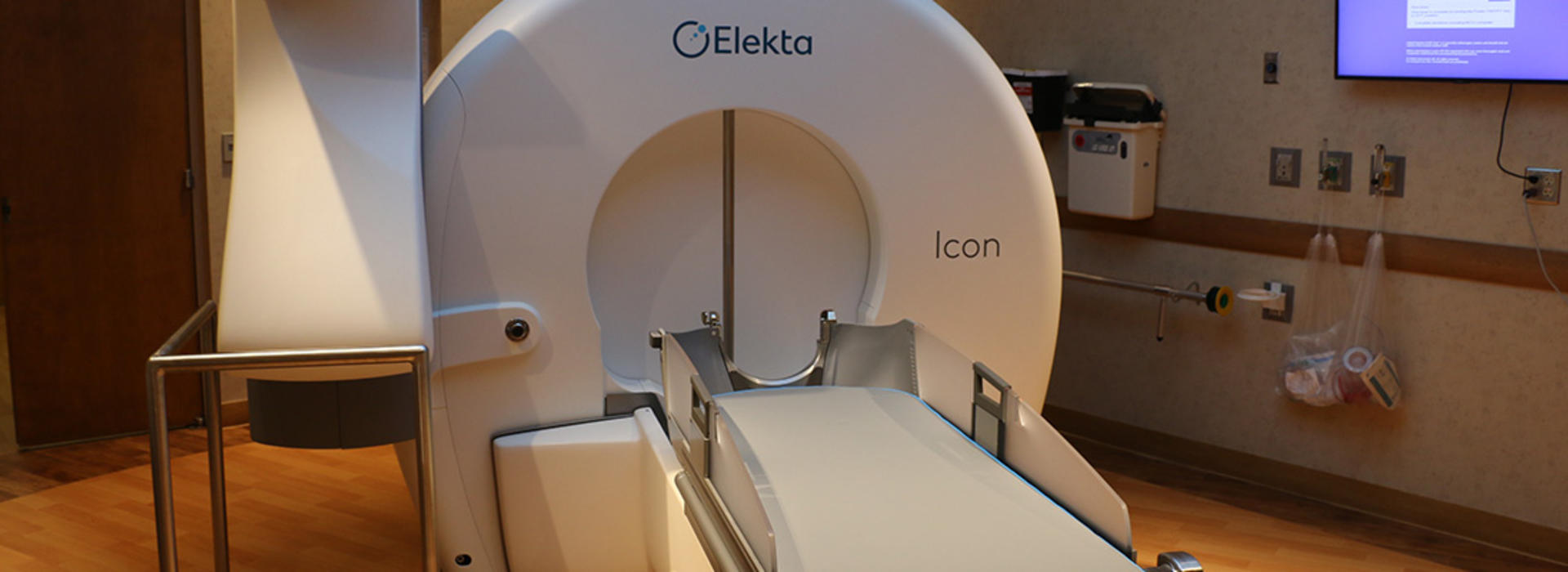
University of Minnesota Launches Exclusive Gamma Knife Technology for Radiation Therapy
MINNEAPOLIS, MN- July 30, 2019 – Radiosurgery is an advanced form of radiation treatment that delivers high doses of radiation to a tumor without exposing the surrounding normal brain to significant radiation. University of Minnesota Health (M Health) is the first in the state to treat brain tumor patients with the latest generation advanced radiosurgery technology, the Gamma Knife Icon.
Radiosurgery works by focusing radiation beams from different angles to a small target. While each beam delivers a small radiation dose that is well-tolerated by the brain, the point where the beams converge receives a high dose -sufficient to eradicate tumor cells.
“For this radiosurgery to work, precision of radiation delivery is essential. Being off by a few millimeters can mean the difference between destroying tumor cells and mutilating normal brain” said Clark Chen, MD, Lyle French Chair and Head of the Department of Neurosurgery at the University of Minnesota Medical School. “The Gamma Knife Icon is the sixth generation of Gamma Knife radiosurgery machine. It is capable of targeting treatment areas with accuracy to within 0.15 mm, or the width of two human hairs. This is the most accurate of the Gamma Knife machines to date.”
Because radiation is delivered only to the area of the tumor, radiosurgery is fundamentally different from traditional external beam therapy where larger areas of the brain are irradiated. Radiosurgery is particularly beneficial for patients with brain metastases. With Gamma Knife, the metastatic tumor can be targeted leaving the surrounding normal brain untouched.
“In radiosurgery, we don’t expose patients to the possible downside effects of treating their whole brain,” said Radiation Oncologist Kathryn Dusenbery, MD, University of Minnesota Medical School. “With the Gamma Knife Icon, we treat such a small area of the brain and the rest of the brain gets so little dose that patients don’t lose their hair and neurocognitive decline is not a concern.”
In contrast to previous generations of Gamma Knife machines that require a metal headframe to be affixed to the patient’s skull, the Icon gives clinicians the choice of using an individualized face mask during radiation delivery. In this way, Icon will improve patient comfort and experience. Because of the new motion tracking technology, treatment can additionally be divided across multiple sessions, a capacity that previous generations of the Gamma Knife machines lack.
While this technology has benefits, Chen cautions, “In patients who have a small target or require high radiation doses, the headframe still gives us the most accurate way to deliver radiosurgery and avoid radiation to the uninvolved brain. Judicious decision between frame-based or mask-based radiosurgery will require a multi-disciplinary discussion between radiation oncology and neurosurgery. At the University of Minnesota, dedicated experts in both departments hold weekly conferences to review these decisions and tailor treatment plans to each individual patient.”
Medical teams began treating patients using the Gamma Knife Icon the week of June 24 (2019).
About the University of Minnesota Medical School
The University of Minnesota Medical School is at the forefront of learning and discovery, transforming medical care and educating the next generation of physicians. Our graduates and faculty produce high-impact biomedical research and advance the practice of medicine. Visit med.umn.edu to learn how the University of Minnesota is innovating all aspects of medicine.
Contact: Krystle Barbour
Media Relations Manager, University of Minnesota Medical School
kbarbour@umn.edu
612-626-2767